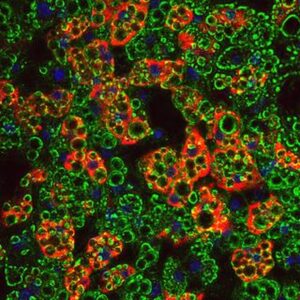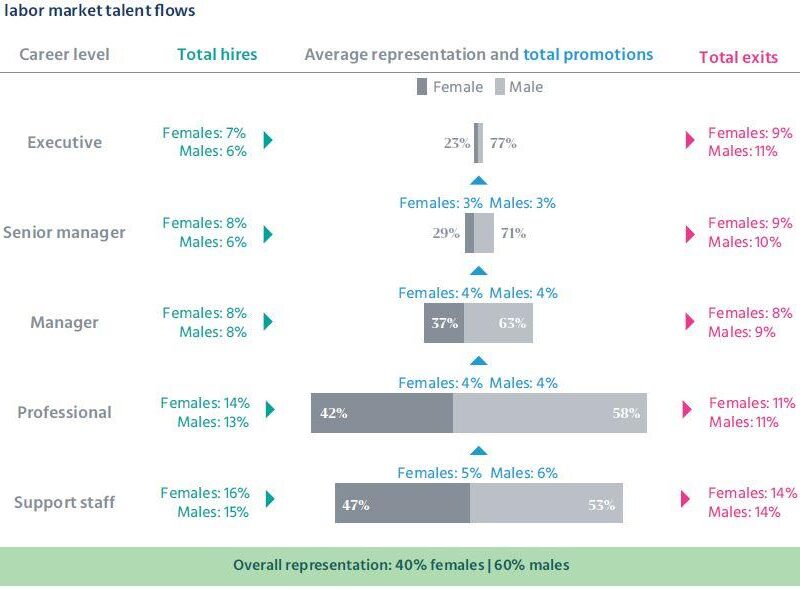A NEW APPROACH TO TREATING OVERWEIGHT AND OBESITY
Gene network helps to turn white fat into beneficial calorie burning fat

Photo courtesy of Technical University of Munich
1.9 billion people in the world are overweight. Of these, 650 million people are obese, which increases the risk of secondary diseases such as type 2 diabetes, high blood pressure or cancer. Professor Martin Klingenspor and his team at the Technical University of Munich (TUM) examine how our fat metabolism affects our body weight and overall health. In cooperation with professor Bart Deplancke’s systems biology group from the École Polytechnique Fédérale de Lausanne (EPFL), the team has now uncovered an entire network of genes that could turn energy storing fat into beneficial calorie burning fat.
Our fat cells, technically referred to as adipocytes, play an essential role in regulating energy balance in our body. “Adipocytes are not merely an energy storage for times of deprivation, but they also release hormones into the blood, regulating our metabolism as well as feelings of hunger and satiety through the brain and other organs. Nevertheless, too much of a good thing causes harm.” explained Professor Klingenspor, Chair of Molecular Nutritional Science at the TUM Else-Kröner-Fresenius Center.
White, beige or brown – the color of fat cells affects our health
There are different types of fat tissue in our body, which can be categorized according to color. White fat cells are primarily responsible for energy storage. Brown and beige fat cells can convert nutritional energy into heat. This process is referred to as non-shivering thermogenesis – a principle that small mammals and human newborns use to maintain a stable body temperature.
The occurrence and activity of brown and beige fat cells vary among individuals. There is some evidence suggesting that people with a high number of thermogenic fat cells possess a lower risk to develop obesity and associated metabolic disorders. Especially the growth of beige fat cells within white fat tissue may have particular health benefits.
Browning ability of white fat is genetically determined
“We want to understand how thermogenic fat cells develop; so how beige fat cells grow inside white fat tissue,” stated Klingenspor. By “browning” the white fat tissue, an energy-storing organ could be partially transformed into an energy-dissipating organ, thereby improving metabolic health.
The development of beige fat cells is controlled by a still largely unknown genetic program. Mouse strains with divergent genetic backgrounds largely differ in their ability to brown the white fat tissue. “By systematically comparing fat cells among these different strains of mice, we were able to discover which genes or regulators might explain the variation in beige cell differentiation – in other words, the growth of beige fat cells”, indicated Klingenspor.
New possibilities due to transcriptomics and network analyses
By sequencing all transcripts of a cell using Next Generation Sequencing technology, all gene activities across the entire genome can be registered in a snap-shot. For the current study, the joint TUM/EPFL team performed a comparative analysis of the transcriptomics of fat cells from genetically divergent mouse strains. The study goes beyond other work in this field in that it not only identifies important individual factors but also relates them to each other in a molecular network.
With this approach, the team could provide a systematic overview over the network of cell-intrinsic regulatory mechanisms that represent the underlying principle for the development of beige fat cells, making them the first team of scientists to achieve this.
“Now we have gathered a unique insight into the genetic architecture driving the molecular mechanisms of beige fat cell development. What we managed to confirm in a cell culture is now to be examined ‘in vivo’ – so inside a living organism – as our next step,” said Klingenspor with respect to avenues for future research.
Publication:
Li, Y., Schwalie, P. C., Bast-Habersbrunner, A., Mocek, S., Russeil, J., Fromme, T., Deplancke, B. & M. Klingenspor: Systems genetics-based inference of a core regulatory network underlying white fat browning. Cell Reports 2019;29:4099–4113. DOI: 10.1016/j.celrep.2019.11.053
Professor Klingenspor’s:
Professor Klingenspor’s lab is a member of the Else Kröner-Fresenius Center for Nutritional Medicine (EKFZ). The EKFZ was established at TUM in 2005: Its innovative approach combines traditional nutritional science with broader medical research – a unique feature in the scientific landscape of Europe. The Center comprises three Chairs with roughly 60 employees covering two faculties (Medicine, Science Center Weihenstephan). (https://www.tum.de/nc/en/about-tum/news/press-releases/details/34833/)
Technical University of Munich
The Technical University of Munich (TUM) is one of Europe’s leading research universities, with around 550 professors, 43,000 students, and 10,000 academic and non-academic staff. Its focus areas are the engineering sciences, natural sciences, life sciences and medicine, combined with economic and social sciences. TUM acts as an entrepreneurial university that promotes talents and creates value for society. In that it profits from having strong partners in science and industry. It is represented worldwide with the TUM Asia campus in Singapore as well as offices in Beijing, Brussels, Cairo, Mumbai, San Francisco, and São Paulo. Nobel Prize winners and inventors such as Rudolf Diesel, Carl von Linde, and Rudolf Mößbauer have done research at TUM. In 2006, 2012, and 2019 it won recognition as a German “Excellence University.” In international rankings, TUM regularly places among the best universities in Germany.
For more information:





